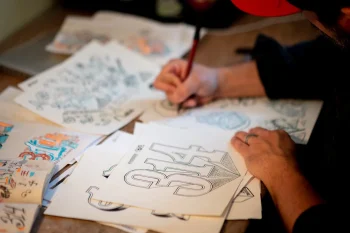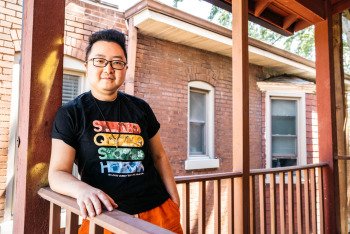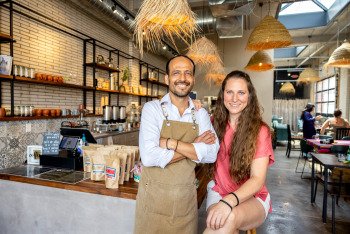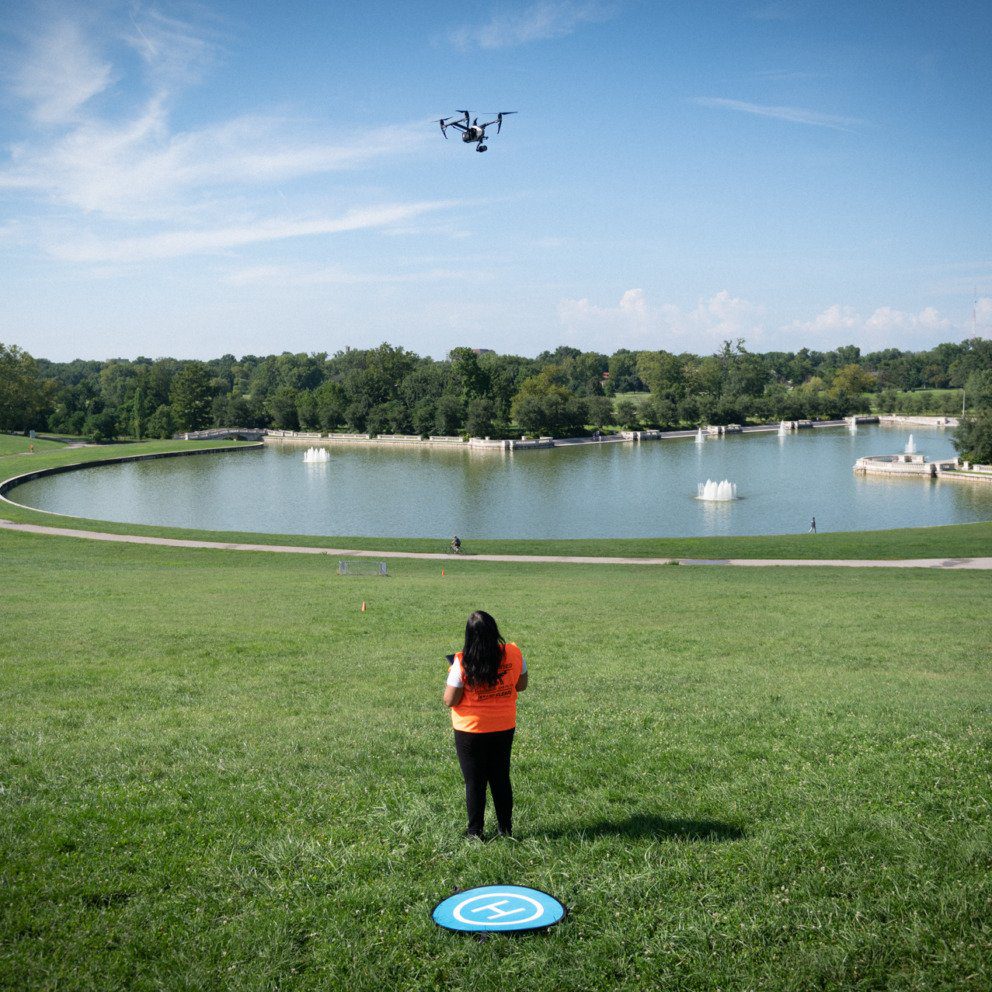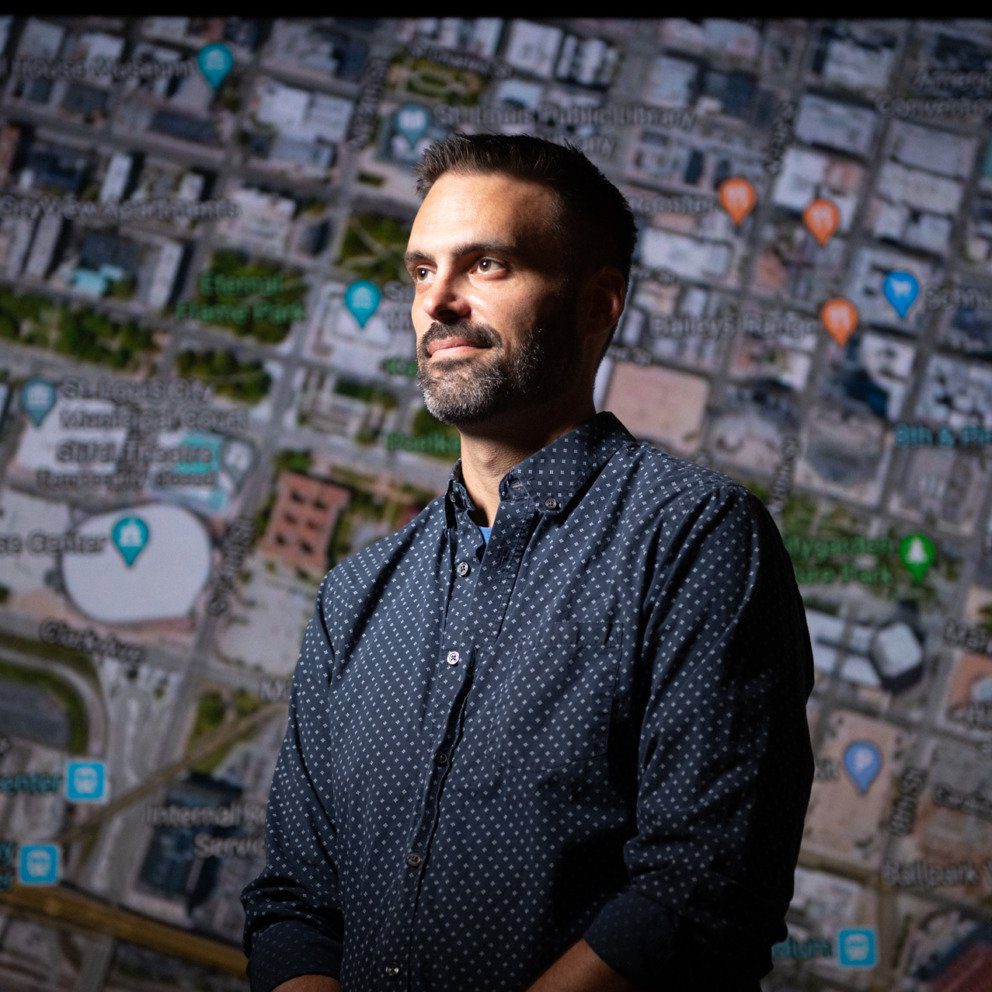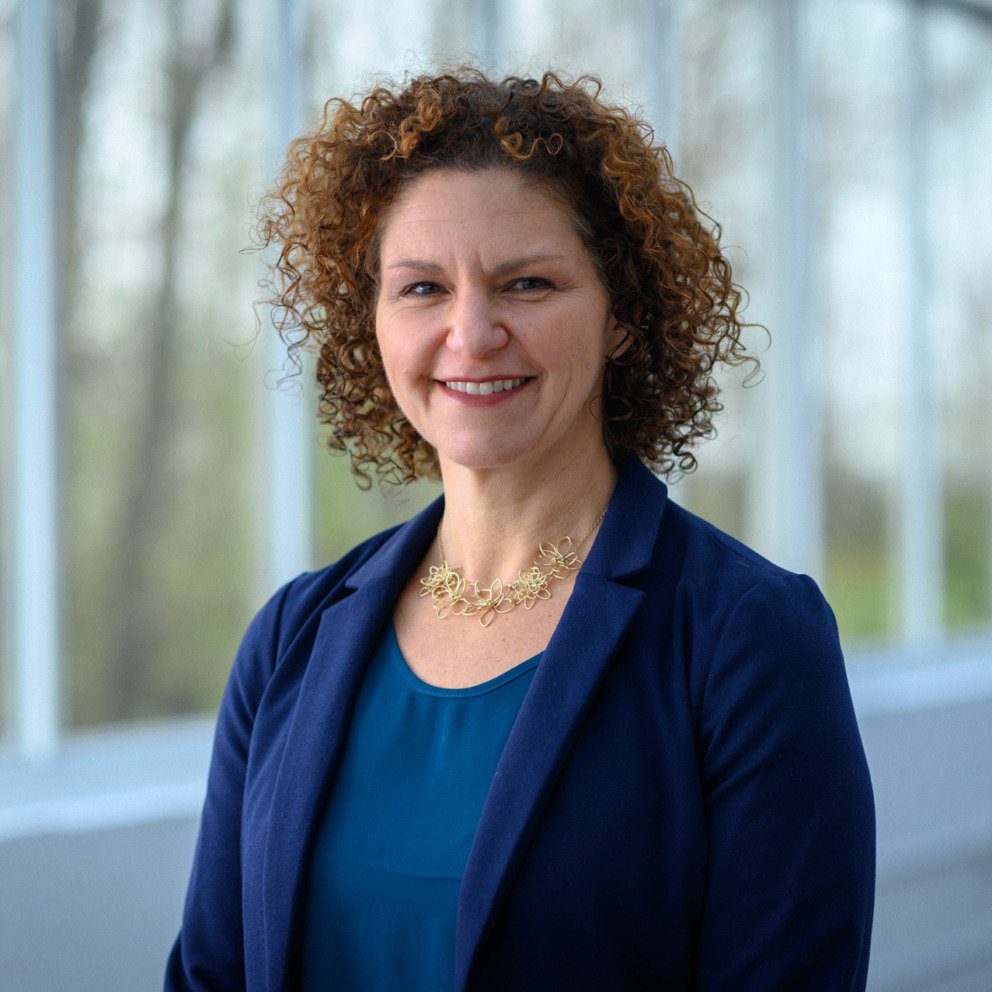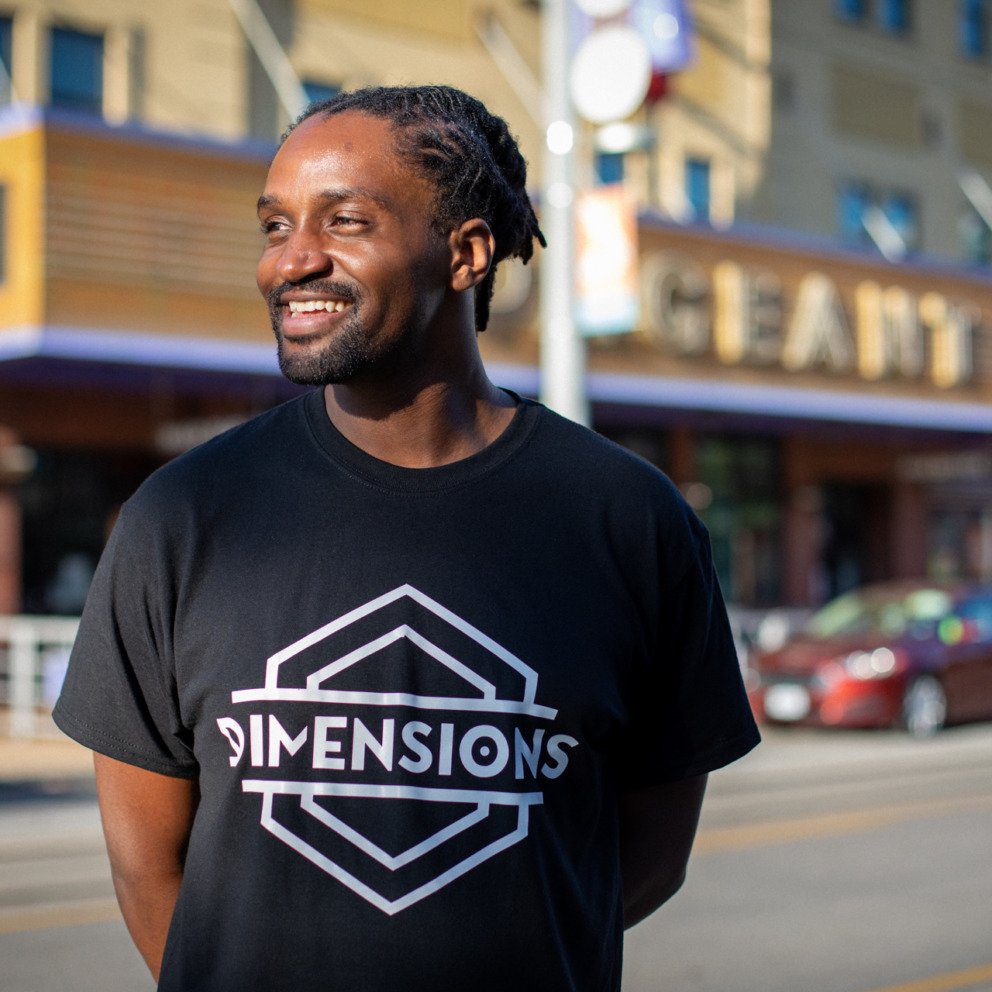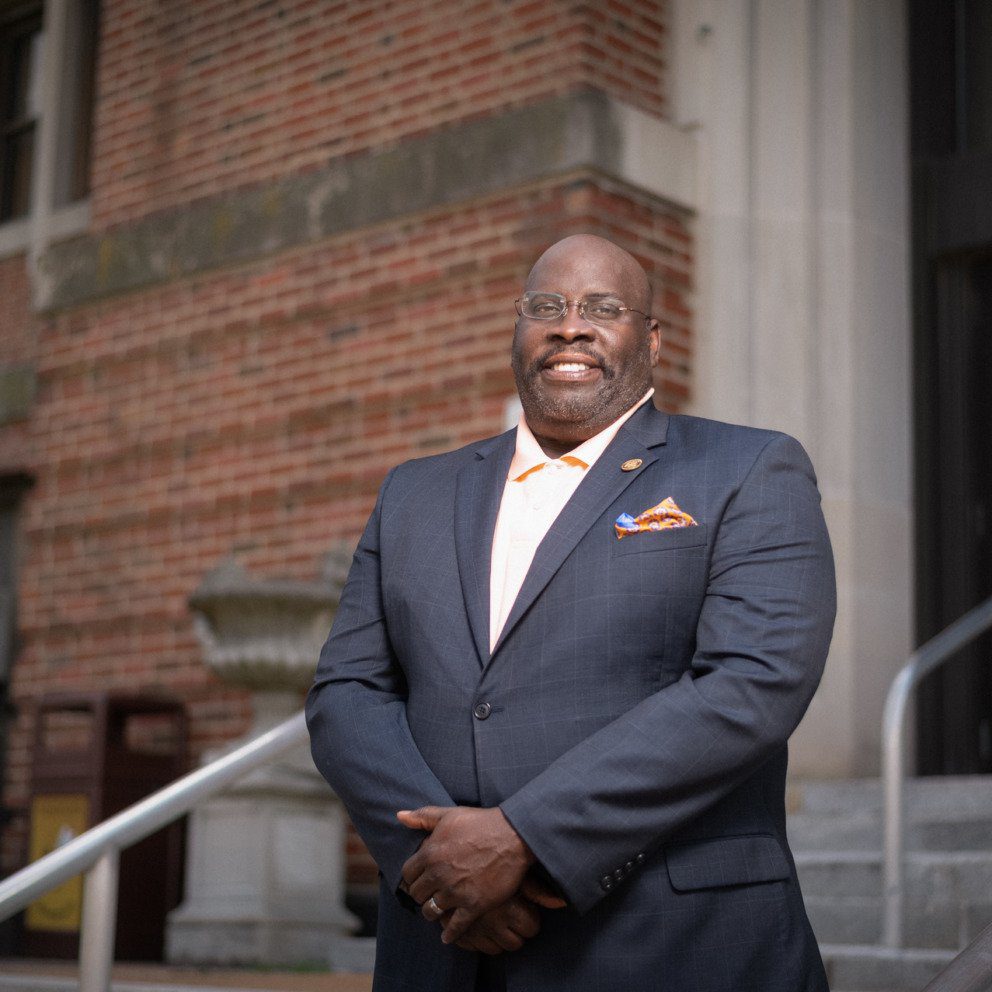Mapping Inequities
Kemba Noel-London used geospatial data in her doctoral research to discover disparities in access to youth sports throughout the St. Louis region.
When Kemba Noel-London tells people she’s an athletic trainer who is working toward a doctoral degree, they’re surprised – most athletic trainers practice in the field rather than continuing on in school.
When she tells the people that as part of her Ph.D. program, she’s using geospatial data to assess inequities at the intersection of athletics and public health, they’re even more surprised. Geospatial data is most often associated with tech.
“Nobody really talks about applying geographic information systems to sports and to sports medicine,” laughs Noel-London. “That is not the first thing people think when they think GIS (geospatial information system).”
(Not sure what geospatial is? Check out our interactive slideshow.)
But using geospatial data provides essential information about space and context, which influences many aspects of health care.
“I think applying that spatial context brings a different flavor to the conversation of equity,” Noel-London says. ”And I think also incorporating athletic trainers into that conversation when we’re talking about sports is something that I’m trying to do very intentionally so that when we’re talking about sports and access to sports, we’re also talking about that this needs to be safe, so we need to talk about access to athletic trainers too.”
As a former national athlete for Trinidad and Tobago who tore her ACL at the age of 17, Noel-London knows personally how sports-related injuries can affect all aspects of someone’s health, and how important rehabilitation is. The negative experience she had with her ACL injury and rehab drove her to become an athletic trainer so she could help others have better care. After graduating with her master’s degree in athletic training from Saint Louis University, she worked at the University of South Carolina for a year before heading back home to her native Trinidad – and then hopped on a plane to Scotland three days later, to accompany the national youth netball team. It was a full-circle moment for her work with young national athletes. But even as an athletic trainer, she felt she wasn’t doing enough to better the health care system as it relates to youth sports.
“I realized there were skills that I did not have to answer the questions I had,” Noel-London says. “And the best framework I thought to do it was through public health because it was representative of things that were going on in the wider health care system.”
As a SLU student, she had noticed anecdotally that there seemed to be a greater variety of sports offered at schools depending on where they were located in the St. Louis region. For her doctoral research, she wanted to see if that was in fact true, and if so, what factors contributed to it.
“To explain how I use geospatial, I say that everything within American society is not an accident,” Noel-London says. “There have been systems and policies in place that have shaped the way that the society looks, and in St. Louis, the way that the city and county are made up.”
The idea of using geospatial data came from one of her professors at SLU, Enbal Shacham, Ph.D., who has used geospatial data in health care research in a number of areas including tracking the spread of COVID-19. Noel-London used GIS to map out the variety of sports available in the region’s school districts.
“I created something called the Sport Diversity Index, which is looking at the variety of sports that are available to different school districts,” Noel-London said.
She examined the funding of various schools and districts and compared that to the proportion of rent-occupied housing as a proxy for state and local tax contributions. Noel-London hypothesized that in school districts located in areas that are majority rent-occupied, there would be a lower number of sports programs and sports medicine that were offered because of the smaller amount of property tax collected.
“And it was disheartening to be right — it was one of those times where I really wanted to be wrong,” she said.
While Noel-London used GIS to conduct data and analysis to provide insight into the local youth sports scene, she also has years of experience, having worked closely with the students as both an athletic trainer and head of the Athletic Training Club at Roosevelt High School.
She says her experience with those students is why she researches these societal inadequacies and pushes for a more equal shift in athletic resource distribution. A particularly impactful experience she had as an athletic trainer was with a student who wanted to play basketball in December, but came to her with an arm that he had broken months ago – but was still wearing in a sling, and hadn’t received rehab for his injury.
“His arm was locked at 90 degrees because there was miscommunication between him going to therapy at the hospital and then his mom was also working multiple jobs. The time they scheduled therapy didn’t work for her, so then he just didn’t do therapy at all,” she said.
She was able to help him recover in time for the basketball season.
“That experience for me was like this is why I do this, this is why I think it’s important to examine things like school-based health centers and how we can place athletic trainers within them to increase access in a really cool and interesting novel way that is designed for public health,” she said.
Roosevelt High School also houses Nahed Chapman New American Academy, which helps immigrant and refugee children adjust to St. Louis before enrolling in mainstream school. As head of the athletic training club at Roosevelt, Noel-London also worked with many refugee students from Nahed Chapman, kids she believes she was able to connect with on a deeper level even though the way she came to St. Louis was very different than the student refugees’ experience.
“I think it’s very reassuring when you walk into a place and somebody looks like you but also sounds different to everybody else,” she said. “There’s a certain camaraderie — and I experience it as well.”
She’s glad to be able to help these students when they’re injured.
“To come here and now, you sprain your ankle, but you have somebody who’s there to actually take care of you and help you get back to playing soccer a lot faster is such a great and comforting thing to have in a space and a country that is kind of always telling you that you don’t belong.
For me, as an immigrant and an international student, that was a new layer of this profession and working in that space that was also really fulfilling.”
After using geospatial technology in her public health research, Noel-London sees geospatial data as a natural part of her future work in public health.
“To think that our profession, and the things that I do, are not impacted by space, would be me willfully ignoring a whole history and ignoring all of the other research that suggests that public health is influenced by space and context,” said Noel-London. “I think using GIS, we can help figure out some problems, figure out some patterns, but would also help solve them, too.”
This story is part three of a four-part series on geospatial in St. Louis. Read the first story of the series here, the second here and the final story here.
